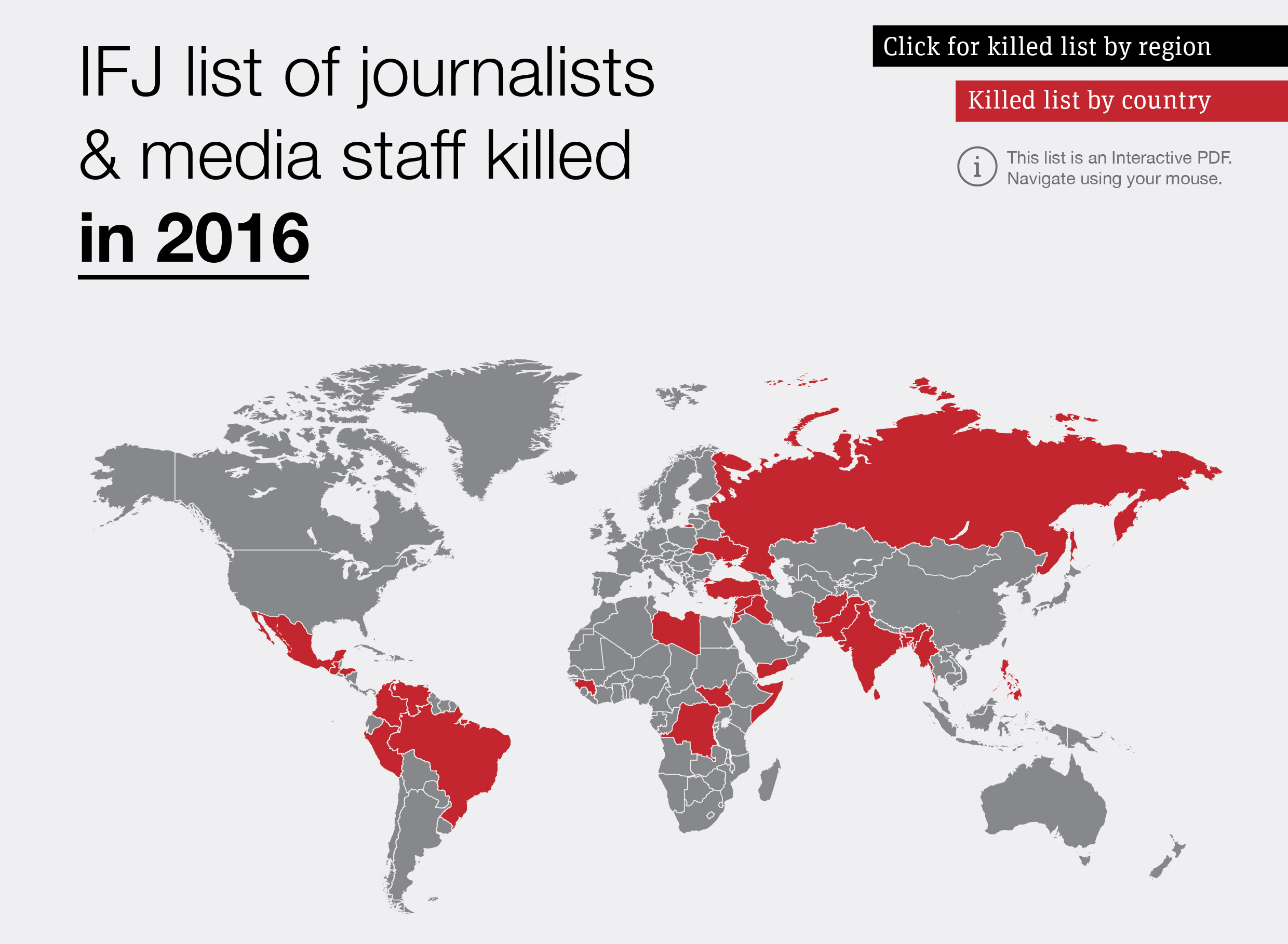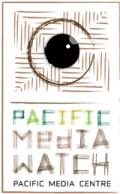
BRUSSELS (International Federation of Journalists/Pacific Media Watch): . - At the end of each year, the International Federation of Journalists (IFJ) publishes a list of all the journalists and media workers killed in the course of their work over the ofrevious 12 months.
As part of IFJ's ongoing commitment to tackle impunity and campaign for greater safety for journalists, today, the federation is publishing the story behind the killings – an in-depth analysis of each region with an explanation of the victims and circumstances of each death.
The report lists details of 93 media professionals killed in work-related incidents such as targeted murders, bomb attacks and crossfire incidents last year, a decrease compared to the 2015 figure of 112 killings.
The publication also contains a safety analysis of each of the IFJ regions. The Middle East and Arab World have the highest number of killings (30), followed by Asia Pacific with 28 killings, Latin America (24), Africa (8) and Europe (3).
In countries such as Iraq, Syria and Yemen, most of those killed were under 30 years old - some of them as young as 19 - worked as freelancers and had neither protective equipment nor adequate safety training.
In Asia-Pacific, while actions in Pakistan to tackle journalist fatalities and shocking impunity levels finally seem to be making some difference, the situation in neighboring Afghanistan and India shows a worrying trajectory.
The decrease in attacks on journalists and media staff in the Americas is only due to the fact that journalists in some countries resort to self-censorship and are forced into exile to stay out of trouble and spare their lives.
Journalism in Africa remains in the grip of violence, partly fueled by the failure of governments to tackle the issue of impunity, while in Europe states often fail to take killings seriously enough.
“We welcome the efforts made by our affiliates and regional offices in producing such a publication which shows the diversity and complexity of the safety issues facing our colleagues on a daily basis in each corner of the world. This report stands as a tribute to the memory and commitment of those killed in trying to shed light on important issues around the globe and to our affiliates in campaigning to improve the safety and security of journalists,” said IFJ General Secretary, Anthony Bellanger.
“Although the killings have decreased, we still noted rising threats, intimidation and self-censorship providing evidence that attacks on freedom of expression remain at critical levels,” added IFJ President, Philippe Leruth. “We call on the authorities worldwide to do their utmost to put an end to impunity and deliver justice to the families and friends of all the killed journalists.”
The IFJ has compiled an annual list of journalists and media staff killed since 1990 from information from its affiliates and other credible sources after having established a clear or reasonable link between the killing and the professional activity of the victim.
This work is licensed under a Creative Commons Attribution-NonCommercial 3




